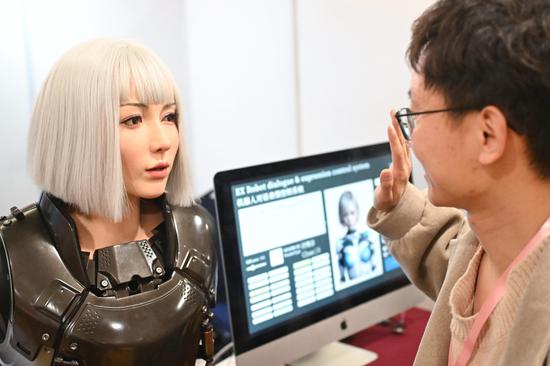High-risk pregnancies and screenings of congenital birth defects are targeted
China has improved treatments for high-risk pregnancies and stepped up screenings of congenital birth defects in recent years, as part of efforts to deal with the rising number of older mothers and an emphasis put on quality care for newborns, the National Health Commission said this week.
Shen Haiping, deputy director of the commission's department of maternal and child health, said at a recent news conference that the proportions of women at an advanced maternal age — widely defined as those over age 35 — and women who have previously given birth are rising due to women choosing to have babies later and shifts in the nation's family planning policy.
Official data shows that the average marital age of women rose from 22 years old in the 1980s to 26.3 in 2020. It also shows that women are also giving birth to their first children later, at the average age of 27.2.
In May 2021, China began allowing all married couples to have up to three children. Meanwhile, the nation has managed to continue lowering maternal and infant mortalities, Shen said.
Last year, its maternal mortality rate fell nearly 11 percent from 2020 to 15.1 per 100,000 live births, and its infant mortality rate decreased about 17 percent during the same period to 4.5 per 1,000 live births, she said.
Shen said that more effort will be made to carry out pregnancy risk assessments and categorize and manage pregnant women based on their risk levels. It is also important to formulate individualized treatment plans for those deemed to be in dangerous conditions.
She added that nearly 3,500 treatment centers for seriously ill pregnant women, as well as about 3,320 centers for infants in critical condition, have been set up nationwide, signifying that a comprehensive and coordinated treatment network for pregnant women and newborns has been established.
"A large number of pregnant women may suffer complications such as diabetes and high blood pressure, so we are guiding medical institutions to assemble a multidisciplinary emergency care group to improve treatment," she added.
Amid a drive toward building a birth-friendly society and promoting a long-term balanced population, authorities have also emphasized preventing birth defects.
Shen said that the mortality rate of infants due to birth defects and that of children under age 5 have both fallen over 30 percent compared to five years ago.
"The incidence rate of disabling birth defects, such as neural tube defects and Down syndrome, decreased 23 percent," she said.
Nationwide, the rate of pre-pregnancy examinations has reached nearly 92 percent, and the rate of prenatal screenings during pregnancy has also exceeded 88 percent. Among newborns, the screening rates of genetic metabolic diseases and hearing impairments have surpassed 98 percent, according to Shen.
Meanwhile, early examinations and interventions are being rolled out.
"Screenings targeting phenylketonuria (a rare inherited disorder that can cause brain damage) are being carried out nationwide to detect infants born with the disease as soon as possible," she said. "Special milk formula that can lessen the disease's impact on intelligence will be delivered to newborns who have the disease, and most patients receiving early treatment can develop nearly normal intelligent capabilities eventually."
Shen said that the commission will build more screening and diagnosis facilities for birth defects and step up rehabilitation services to safeguard the health of children.
Li Jie, head of the Nanjing Drum Tower Hospital's prenatal diagnosis center, said during an interview with Xinhua Daily, a newspaper in Jiangsu province, that pre-pregnancy examinations that aim to identify potential risks of congenital disorders, and prenatal screenings that can discover most congenital heart diseases, cleft lip and palate and other malformations have formed the first two lines of defense.
"But no screening techniques can guarantee 100 percent accuracy, and there is the possibility of false negatives or false positives," she said. "For newborns that were born with defects, we can also deliver timely treatment as a third layer of defense.
"For instance, newborns who are found with congenital deafness will be fitted with cochlear implants promptly to prevent lifelong hearing loss," she said.


















































 京公網安備 11010202009201號
京公網安備 11010202009201號